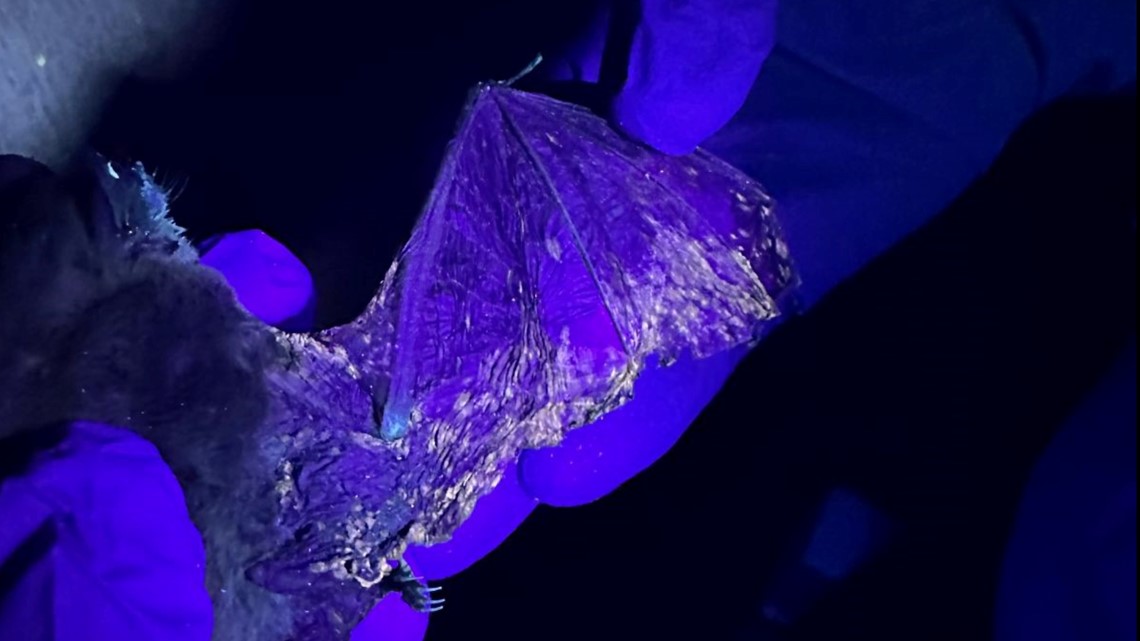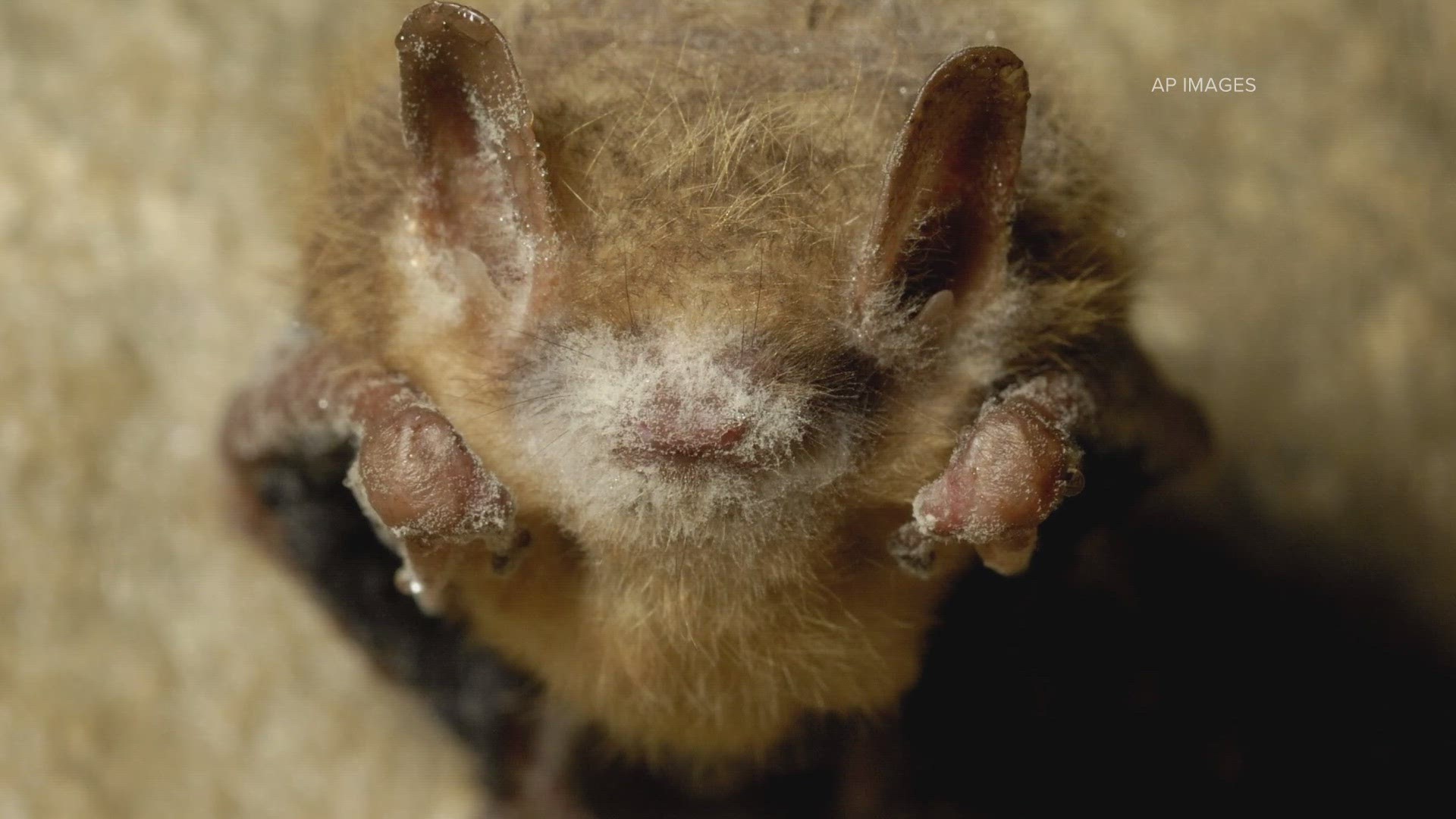BOULDER COUNTY, Colo. — Two "little brown bats" in Boulder County have been found with white-nose syndrome in the past month.
On Feb. 29, a bat was found crawling on a public bike path in Longmont, according to Colorado Parks and Wildlife (CPW). Its wings appeared brittle, which prevented the bat from flying, CPW said.
The bat was sent to the CPW Wildlife Health Lab for further investigation.
On March 5, CPW sent samples from the bat to Colorado State University for testing, CPW said. The test results confirmed the bat had white-nose syndrome, according to CPW.
A second little brown bat was confirmed to have white-nose syndrome two weeks later in Boulder.
White-nose syndrome is a disease caused by an invasive fungus that has killed millions of bats in North America.
The fungus that causes the syndrome has been found in three little brown bat summer roosts in Colorado, but no sick bats had been found until now, CPW said.
The first case of white-nose syndrome was found last March in a Yuma bat, according to CPW.
“While it is unfortunate to discover this deadly disease in a second Colorado bat species, CPW did anticipate that this would happen based on what has been documented in other states,” CPW Species Conservation Program Manager, Dan Neubaum said.
“We will continue to monitor the spread of this disease with our partners and ask the public to report sick or dead bats to CPW, particularly when found during winter and spring months.”


According to state and federal agencies, outdoor enthusiasts can help by following these recommendations:
- Stay out of closed caves and mines.
- Decontaminate footwear and all caving gear before and after visiting or touring caves and other places where bats live.
- Do not touch bats. Report dead or sick ones to CPW by calling 303-291-7771 or email wildlife.batline@state.co.us.
- Gear and clothing used in areas where the fungus or WNS occurs should not be used in areas where the fungus is not known to occur. White-Nose Syndrome (whitenosesyndrome.org)
- To avoid accidentally transporting bats, check canopies, umbrellas, and other outdoor items for bats that may have roosted in nooks or crannies.
The fungus does not infect humans or pets, according to CPW. However, the fungus can be transported on gear and clothing that has been in contact with contaminated environments like caves where bats hibernate, CPW said.
SUGGESTED VIDEOS: Animals and Wildlife

